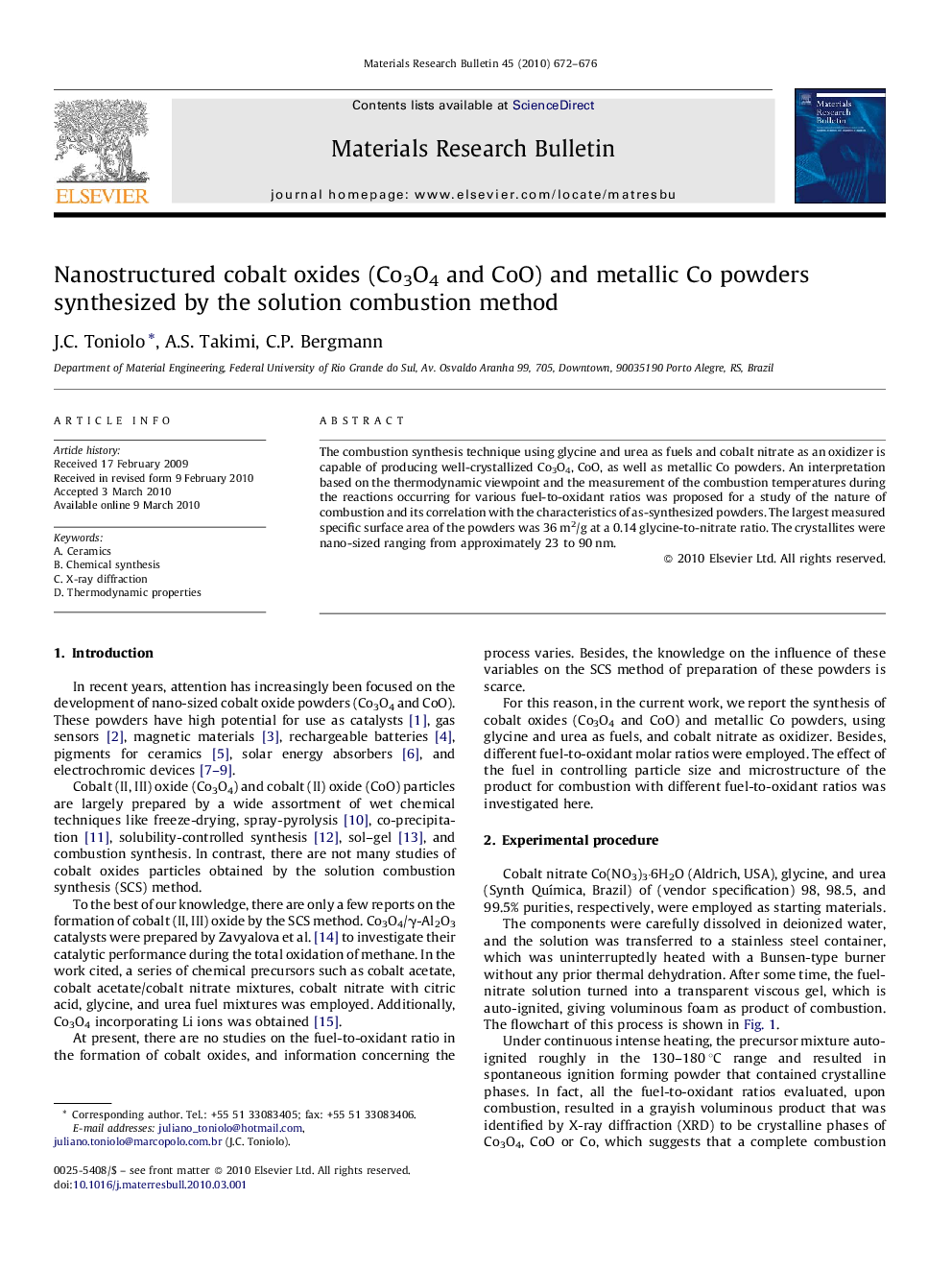| Article ID | Journal | Published Year | Pages | File Type |
|---|---|---|---|---|
| 1490511 | Materials Research Bulletin | 2010 | 5 Pages |
Abstract
The combustion synthesis technique using glycine and urea as fuels and cobalt nitrate as an oxidizer is capable of producing well-crystallized Co3O4, CoO, as well as metallic Co powders. An interpretation based on the thermodynamic viewpoint and the measurement of the combustion temperatures during the reactions occurring for various fuel-to-oxidant ratios was proposed for a study of the nature of combustion and its correlation with the characteristics of as-synthesized powders. The largest measured specific surface area of the powders was 36 m2/g at a 0.14 glycine-to-nitrate ratio. The crystallites were nano-sized ranging from approximately 23 to 90 nm.
Related Topics
Physical Sciences and Engineering
Materials Science
Ceramics and Composites
Authors
J.C. Toniolo, A.S. Takimi, C.P. Bergmann,
